Frances H. Arnold
Biographical
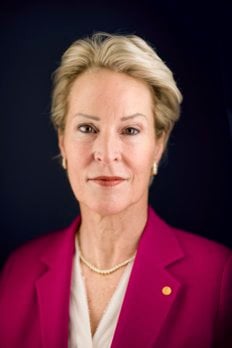
I was born in East Pittsburgh, Pennsylvania, on July 25, 1956, misshapen after my mother’s twenty-four-hour labor and with no hair. My father called me his ‘Swan’ (until that nickname was swapped for ‘Vampira’ when I was a teenager). William Howard Arnold and Josephine Inman Routheau, both twenty-five, already had two-and-a-half-year old Bill when I came along. I was followed thirteen months later by Edward (a sweet ‘surprise’), then by David, and finally by Thomas when I was twelve and old enough to take care of a baby by myself.
This crowd of boys, which I learned to navigate, was usually organized by Bill, named after my father and after my grandfather, General William Howard Arnold, who had served in the U.S. Army in the Pacific theater during WWII, commanded the U.S. forces in Austria after the war, and retired as commander of the 5th U.S. Army. We were part of an extended Catholic family, many of whom to this day gather at summer cottages in Macatawa, on the east shore of Lake Michigan. The women in the family ran the show, ably filling in to organize the troops at home. For years we shared my grandparents’ turn-of-the-century cottage “Stack Arms” with various cousins, until my father built his own place in 1965. My grandfather, the powerful general, died of a broken heart only weeks after his beloved and even more commanding wife, Elizabeth Welsh Mullen, succumbed to breast cancer in 1976.
Macatawa, Michigan was paradise because we could run around freely, sometimes in packs, and sometimes alone. My mother nearly had a heart attack one day upon seeing my tricycle abandoned at the end of the dock. I was found underneath the dock, digging up crayfish. A couple of summers later, I had to be persuaded not to launch the raft I built to take me to Chicago, ninety miles across the lake. I learned to sail, and to respect and use the forces of nature, on Lake Michigan. Without television or internet, we enjoyed books, bicycles, and friends. I read every single issue of the 1950s Readers’ Digest from the stack next to the Analog Science Fiction and Fact magazines my father adored. I was especially entranced by the reports of severed limbs being reattached in miraculous surgeries. I envisaged myself following an early idol, Dr. Christiaan Barnard, who performed the first human heart transplant in 1967. In a single summer I tore through every medical book available in the local Holland Public Library. But I abandoned the idea of being a transplant surgeon when I found out that the mere sight of blood made me nauseous.
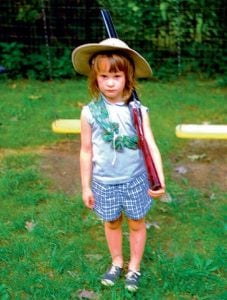
Figure 1. Frances, 1961.
Summers were heaven, but the school years in Pittsburgh were another story. No one knew what to do with a smart little girl in the 1960s. Attempts to keep me busy included music lessons (piano and violin), any number of sewing and art projects, ice skating – which involved walking more than a mile in freezing weather to the rink – and Saturday catechism classes in Wilkinsburg, again on foot, snow, rain, or shine. I spent as much time as I could outdoors, digging under stones for salamanders, and also finding and collecting used soda bottles which I could turn into the local drug store for two cents. Three bottles = one fudgesicle. I led my younger brother on adventures that involved exploring large drainpipes; and when that was not possible – it seemed like we were in an ice age then, with regular school closures for four feet of snow – we watched I Love Lucy re-runs on the round TV set and played infinite variations of war games.
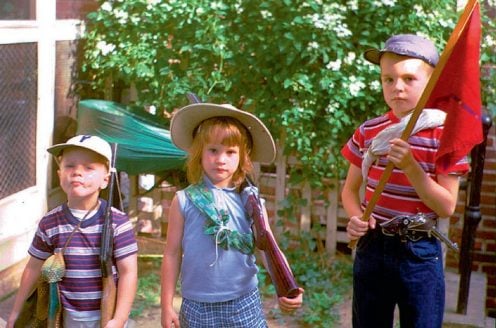
Figure 2. War games. Eddy, Frances and Bill, 1961.
My father, an experimental physicist who received his PhD from Princeton in 1955 at the age of 24, spent 1954 doing experiments on top of Mt. Evans in Colorado. My mother was not thrilled to be in such a remote site (elevation 10,700 ft), and they moved down-mountain to Idaho Springs (7,500 ft) shortly before my brother Bill was due. Both my parents contracted polio there and spent time in iron lungs, cared for by my fearless maternal grandmother, Josephine Routheau. Upon graduation, my father set aside academics to work in the nascent nuclear industry. The Westinghouse Electric Corporation in Pittsburgh was going to provide “electricity too cheap to meter,” and my father helped design the pressurized water reactor technology needed to make that dream come true.
In the 1960s, my father was away from home much of the time. He seemed to be in Nevada a lot; later I learned it was for nuclear testing. He would bring us silver dollars from the casinos to which he had to accompany the big bosses on their gambling sprees. When at home, he loved to build houses or model airplanes, listen to classical music, read, and work on his coin and stamp collections. I thought he was the smartest person in the world because he knew all the answers, could explain how everything worked, and could fix nearly anything. To spend time with him, Eddy and I vied for the duplicates of the stamp collections. We divided up the world: I got the British colonies; Eddy took the rest of the world. From stamp collecting I learned geography, and learned that geographical boundaries, governments, and even languages, changed over time. I learned that empires crumbled, and former colonies gained independence.
My brilliant success in elementary school got me into typing class. At the age of ten, far ahead of my classmates, I spent most of my time drawing pictures, making little paper people for my friends, and perfecting my mirror writing (being left-handed made it easy for me to write backwards and impress my friends when they held my coded messages up to the bathroom mirror). My parents somehow convinced Edgewood Elementary School to allow me to take some classes at the high school next door. One of my favorite extra classes was typing, although I was not very good at it. I would perch on two telephone books in order to reach the typewriter while the high school students laughed at the tiny 5th grader with legs dangling from the elevated seat. I still have letters I typed to my father during class. I also took mechanical drawing, which was also challenging, but taught me the important skill of looking at and describing objects from different perspectives.
By age 13 I was pretty much fed up with classroom learning. It was 1969, and Baltimore, the city we lived in at that time, was burning. I was not invited back for 9th grade to the private girls’ school that my mother had worked very hard to get me admitted to, and which I hated anyway. Instead of attending school, I began hitchhiking to anti-war protests in Washington D.C. I spent only half of 9th grade at the large public, inner city high school before my father’s job took us back to Pittsburgh. The move back North just made my trips to the protests longer.
At Allderdice, an excellent public school in the Squirrel Hill neighborhood of Pittsburgh, I picked up a few words of Yiddish as my second foreign language (after French) and delighted in a whole new set of descriptions far more colorful than the morose ones of Catholic culture. As a teenager who needed to understand the world, but who lacked the power to navigate it, I distanced myself from my classmates and parents. I lived on my own in a terrible, run-down, and bug-infested third-floor apartment in a gritty neighborhood, working at various jobs to pay my rent and bills while dreaming of a future that would free me from the limitations of being young and female in the 1960s and early 1970s. My jobs included selling seeds (yes, I earned the bicycle at age 10), lunch counter waitress (age 14), pizza parlor helper (15), department store clerk (16), receptionist (16), cocktail waitress (17, I told them I was 22 and no one ever checked, as fewer young people had driver’s licenses then), waitress in Pittsburgh’s famous jazz club Walt Harper’s Attic, and finally taxi driver (age 18). By the time I left for college, I had become adept at maneuvering a massive 1960s Yellow Cab up and down the terrifyingly steep hills and pot-holed streets of Pittsburgh. Those streets were narrower than my cab, but my customers would insist I could get through, and they were (usually) right. Without GPS, I constructed maps in my head and still benefit from the good sense of direction that I developed. Driving a taxi was hard work.
Long days (sometimes more than 10 hours) netted 20 or 25 dollars, but in just a few weeks I worked my way up from the filthy, banged up cabs the old dispatchers gave to new drivers, to clean, newer (but still just as wide) cabs that elicited better tips. The fun had to end, however, because I was on my way to college.
In 1974 I somehow managed to convince the admissions officers at Princeton University to admit me. I thought it was my convincing essay, or perhaps the fact that I was a very rare female candidate applying in engineering, but it probably also did not hurt that my father had received his PhD in physics there and knew the Dean of Engineering well. I started in 1974, when the first women were graduating, since Princeton only began accepting them in 1969. There were probably about 15% women in my class, and far fewer in Mechanical and Aerospace Engineering. But being the only female was nothing new to me, and I stayed in MAE because there was no good reason to switch to something else. I was busy absorbing as much knowledge and as many new ideas as I could: Italian language, economics, socialist theory, Russian language and literature, art history, and plenty of math and physics. My lack of interest in chemistry was reflected in my freshman grade, and I did not progress in that field at that time.
At Princeton, I continued driving taxis, worked at the library, assembled electronic equipment, and cleaned the house of philosopher Thomas S. Kuhn. I needed the money to support my addiction to Laker Airways, which made it possible to fly to London for $99 if you were willing to line up at the ticket office in Manhattan at 4 am and fly out around midnight the same day. During my last two years at Princeton, I spent every break in London or Italy or Paris.
Travel opened a fascinating world of different cultures and especially cuisines (I love people’s creativity with food and was delighted to learn that daily food could be completely delicious). After my junior year in high school (1973), my maternal grandparents took my brother Bill and me to Europe for The Grand Tour. They had been visiting Europe for many years, traveling to their favorite little towns in Austria, Germany, France, and Italy. We spent two full months on the road, never staying more than two nights in any one place. Everyone seemed to know and love my grandparents, Col. Edward and Josephine Routheau. “Mama” and “Baba” taught me everything I needed to know to enjoy life with little money. Their secret: a bottle of wine, a fresh baguette, and a bit of pâté on a sunny, grassy knoll by the side of a country road in southern France.
Eager to return to Europe and experience it on my own, I took time off after my sophomore year at Princeton to work in Madrid and Milan in 1976–1977. During this time, I never spoke English, and discovered whole new cultures and friends. My Italian boyfriend and I motorcycled all over northern Italy, and in the summer, we went all the way to Istanbul and back on his 1956 Moto Guzzi 500, the classic bike of the Italian carabinieri. We traveled to the Cinque Terre, before there was a paved road, and camped or slept wherever a farmer would have us. With my guitar I shared the songs of Bob Dylan and Italy’s equivalent, Francesco Guccini, with anyone who would listen.
During my last two years at Princeton, with renewed interest in completing my degree and finding something meaningful to do, my former lackadaisical attitude to coursework changed. I loved the upper level classes and found that, with a little bit of effort, I had genuine talent for math and engineering; in 1979 I earned my degree magna cum laude in Mechanical and Aerospace Engineering. The energy crisis of the 1970s and mentors at Princeton whose passion for connecting science and benefits to society sparked what became a lifelong interest in alternative energy.
After graduating, I donned my backpack once again and, with about $2/day saved for expenses, traveled from Ecuador to São Paulo, Brazil, for an internship on solar energy projects with Professor José Goldemberg, who later became Brazil’s Minister for the Environment and the ‘father’ of its ethanol fuels program. It took six weeks over the Inca trail by bus to make my way from Guayaquil, Ecuador, to Santa Cruz, Bolivia. The trip from Lima to Ayacucho took more than 36 hours on a slow, steep climb up a rocky path, shared with a goat covered with fleas. We stopped every hour, it seemed, so the federal police, looking for Shining Path members, could empty the bus, puzzle over my passport, and hours later send us on our way. I loved Peru, but not the regular bouts of food poisoning. That summer I perfected an ability to sleep anywhere and bolstered my immune system. During my time in Brazil, I picked up a bit of Portuguese and a taste for beans and rice, served for lunch every single day in the cafeteria, and especially for the traditional feijoada, a fantastic, rich stew of black beans and every part of the pig, served on Sundays at noon because it required the rest of the day to digest.
With a degree in mechanical engineering and the Carter administration’s emphasis on clean, renewable energy sources, I took my first ‘real’ job (1979–1980) at a new national laboratory, the Solar Energy Research Institute (now NREL) in Golden, Colorado. My duties in Frank Kreith’s Heat Transfer Group were primarily to develop new passive solar heating and cooling technologies; I also helped write position papers for the United Nations on solar energy in the developing world. Outside the office, I was learning how to ride an off-road motorcycle and improve my skiing, which I had tried for the first time while living in Italy. In exchange for free rent, I lived on a horse property and cared for the animals when the owner was away. I took up classical guitar to combat the onslaught of country western music blaring from every radio station.
1981–1985, University of California, Berkeley
With the election of Ronald Reagan as President of the United States, the future for passive solar heating and cooling seemed somewhat limited. I’d never been to California, but at the end of 1980 I packed my few belongings into my 1971 red Volkswagen Super Beetle and headed west to start graduate studies at the University of California, Berkeley. The chemical engineers there had decided to take a risk on a mechanical engineer who also happened to be a woman, and I was accepted into the PhD program, beginning in January 1981.
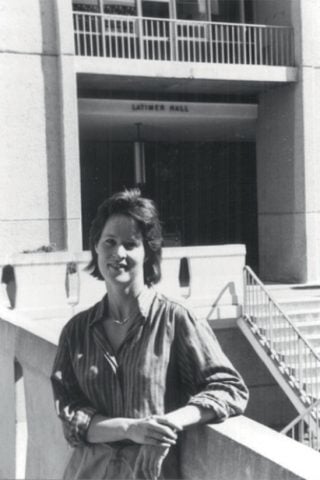
Figure 3. At University of California, Berkeley, College of Chemistry c. 1984.
Although my first desire was to work on cellulosic biofuels, interest in that technology had waned: automobiles ballooned again to giant proportions, and the oil embargoes were forgotten. We also forgot how to care for the planet. Funding for alternative energy projects became scarce; the professor I had come to work for retired; and I had to change direction. Professor Harvey Blanch, Australian by birth and recently recruited to Berkeley from the University of Delaware, however, was ready to support a whole new industry on the horizon, the biotechnology industry. A revolution was taking place in California and Boston – new companies with names like ‘Genentech’ and ‘Amgen’ were looking for engineers to scale up their processes for making protein therapeutics using recombinant DNA technology. Someone would have to produce and purify the recombinant proteins that promised to change the face of medicine.
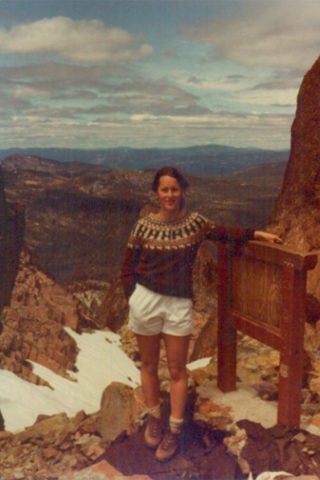
Figure 4. Hiking in the Sierras, c. 1981.
Thus, I took on research in bioseparations, studying affinity chromatography, and developing and validating mathematical models of chromatographic separations. I also developed an appreciation for the challenges of working with proteins: everything was designed around keeping the proteins happy. This was not easy, since proteins are only marginally stable and, it seemed, would denature at the slightest provocation. Furthermore, most protein therapeutics involved highly complex, post-translationally modified structures that are easily rendered useless when manufactured, purified, or stored under the wrong conditions. Process engineers had little experience with proteins, or with biochemistry for that matter, and the standard chemical engineering separation processes were ill-suited to protein preservation.
Graduate school, like college, was another feast of learning, but this time it was organic chemistry, biochemistry, immunology, enzymology, advanced mathematics, and of course the entire undergraduate and graduate chemical engineering curriculum. Organic chemistry made sense to me – making molecules was like building a puzzle. After taking it for credit, I happily audited multiple organic chemistry courses as the official note-taker for the student-run Black Lightning note service (beloved by students who dreaded waking up in time for the 8 am class). The superb biochemists Jack Kirsch and Judith Klinman introduced me to the remarkable catalytic capabilities of enzymes from a quantitative, physical chemistry perspective that I especially appreciated, and Allan Wilson introduced me to molecular evolution of protein sequences. I soaked up new knowledge, taking science and math courses just for the fun of it, something I continued to do decades later.
It was not until my last year as a graduate student that it occurred to me to try my hand at being a professor. I played bridge and went backpacking with some of the young professors in the UC Berkeley College of Chemistry, but had little idea of what a professor actually did for a living, other than teach a course or two. My PhD advisor, Harvey Blanch, however, also started companies and consulted for industry, as did some of the biochemistry professors, and this multifaceted activity made the academic enterprise much more interesting to me. I wanted a connection to the ‘real world’, but also the independence I had not experienced in my various previous industrial and national laboratory positions. I therefore decided to apply for academic positions. The year 1984 was a very good time to do so: U.S. universities were waking up to the fact that while more and more women were interested in science and engineering, there were essentially no women on engineering faculties. At that time, chemical engineers did not do postdoctoral research before starting their academic careers, and I was offered positions at a number of very good places, including MIT. In 1985 I accepted a position at the University of Minnesota, which enjoyed the #1 ranking in chemical engineering, but I also parlayed my many job offers into funding for a one-year postdoc at UC Berkeley with biophysical chemist Ignacio Tinoco, to learn spectroscopic methods of characterizing biomolecules that I thought I would use in my future laboratory. I was 29.
Around that time, I met Jay Bailey, a world-renowned biochemical engineering professor at Caltech, a small, private institute in southern California that I knew very little about. Its chemical engineering faculty was tiny, and its reputation in engineering was for very ‘academic’ research. Caltech’s PhDs tended to become professors rather than industry leaders. Since the University of Minnesota could not absorb someone of Bailey’s stature, I applied to Caltech for an assistant professor position. Jay and I married in 1987, in Macatawa, surrounded by friends and (lots of) family.
Directed evolution at Caltech 1986–2003
I moved to Caltech in mid-1986, where I was given a temporary position as a postdoctoral researcher (my official title was ‘Visiting Associate’, as I was already on the rolls as an assistant professor at the University of Minnesota). I was pleased to have a bench in Jack Richards’s laboratory, where I would learn how to engineer a protein’s sequence, a technology I wanted for my own research. Richards had recently developed ‘cassette mutagenesis’, one of the first site-directed mutagenesis methods for engineering proteins. My first foray into molecular biology and genetic engineering was to make a couple of mutated cytochrome c proteins for a collaboration with Harry Gray’s group, who wanted to use them to probe biological electron transfer. Everything was difficult in 1986: synthesizing oligonucleotides, DNA sequencing, cloning, and working with restriction enzymes were all problematic, while my experience with trouble-shooting cloning experiments was very limited. But I persevered, and when my first mutant sequence was confirmed, I was a proud protein engineer.
Auspiciously for me, two Caltech chemical engineering professors moved elsewhere, thus opening a junior position in this new ‘bio’ part of chemical engineering; an offer was extended to me to join the faculty, and I started as Assistant Professor of Chemical Engineering at the California Institute of Technology in January 1987.
Jay Bailey’s was the first, or at least one of the first, chemical engineering laboratories to use molecular biology methods to approach problems in industrial biotechnology. With his own educational and research background limited to mathematical modeling of chemical reaction systems, Bailey ably demonstrated how to use fearless graduate students to bring new techniques into the laboratory. He attracted some of the brightest students from all over the world to Caltech, and I gratefully recruited from that stellar pool to get my own protein-oriented group started. Over the years, I would fine-tune my own ability to remind graduate students and postdocs that they could learn and do anything. The new Arnold lab was going to make sure that protein engineering would become part of chemical engineering, just as Bailey and others were doing for metabolic engineering. These early efforts to genetically engineer biological systems became important and industrially relevant foundations for what is now known as ‘synthetic biology’.
The problem was that no one really knew how to engineer useful proteins. Proteins, especially enzymes, are fascinating and do many things that people find useful, from monitoring blood glucose levels to taking stains off clothes. But many of the problems that chemical engineers (and others) faced with using proteins for industrial applications came from their inability to function under non-natural conditions. Proteins often performed poorly outside their natural environments, and the engineer had to develop Rube Goldberg mechanisms to purify, store, and use them. However, with the advent of technologies for engineering protein sequences, and therefore their properties, it became possible for the first time in the 1980s to consider engineering the protein itself according to the process engineer’s or the industrial biotechnologist’s specifications. My group was going to engineer protein sequences to make them behave in a process or application, rather than design the process or application around the protein.
I also wanted to show that proteins could be engineered for unusual but useful properties that would open up whole new applications. Alex Klibanov of MIT had surprised the world in the 1980s by showing that enzymes could work when suspended in dry, nonpolar solvents. Dissolving enzymes in high concentrations of polar solvents, however, immediately obliterated activity, even if it could be shown that they retained their folded structures. The prevailing view at that time was that proteins could not exhibit highly non-natural properties, such as the ability to function in organic solvents. The argument seemed to be that because Nature never did it, it could not be done. But in fact, that was precisely why it could be done, and why it might even be easy to do so. I therefore took on the challenge of engineering enzymes that would catalyze their reactions when dissolved in polar organic solvents, but no one knew how to alter their sequences for this purpose. My feeble attempts at ‘rational design’ of enzymes for organic solvents were failures, as were most experiments aimed at improving proteins at that time. While it was easy to diminish or even destroy an enzyme’s function, there were very few reports of making better enzymes. And the process was difficult – it required having the enzyme’s crystal structure, of which there were very few, and then understanding the protein’s structure and function sufficiently well to identify not just the sites of useful mutations, but which amino acids ought to be placed there.
In the 1980s, some labs were starting to engineer nucleic acids, peptides and even proteins using phage display and other methods to make huge libraries of biomolecules, which they then sorted using binding assays or genetic selections to find the useful sequences. Appreciating protein complexity as well as the combinatorial explosion in sequence possibilities that comes with targeting multiple sites for mutation and the low frequency of beneficial mutations that could be expected, I developed an alternative and highly general approach suitable for the problems I was interested in, engineering better enzymes. Adopting a simple, newly-developed method for making mutations randomly in a specific gene, the polymerase chain reaction under error-prone conditions, my students and I made libraries of bacteria having genes randomly mutated at just one or two sites and screened them for the properties we wanted using rapid assays in petri dishes or 96-well plate readers. Then we would take the genes for the best proteins and repeat the process to accumulate benefits, evolving the proteins step-wise until we achieved the functional goals.
To my delight, beneficial and surprising mutations appeared in our laboratory-evolved enzymes. Beneficial mutations were not so rare that we could not find them with a carefully controlled screen, and we could accumulate them for further improvements. When we mapped the mutations to the protein structure, we were surprised to see that they often happened on the enzyme surface, where protein chemists at the time argued that mutational effects were mostly neutral. Activating mutations also appeared far from the enzyme active sites, where no one could explain their effects, much less predict them a priori. By 1990 we were finally on our way to engineering useful enzymes, using evolution as our guide. Another golden moment was the arrival of my first son, James Howard Bailey, in April 1990. I was 34 years old, untenured, overworked, but had a beautiful baby boy, was full of energy, and knew exactly where I needed to go.
Not everyone agreed with my approach, however. The protein engineering field, with its main roots in biochemistry, was very much focused on ‘rational design’. Protein chemists argued they could predict beneficial mutations and sequences using structure-guided approaches and even computational methods. Some of my Caltech chemistry colleagues, dismissive of the contemporaneous popularity of ‘combinatorial chemistry’, which involved synthesizing and screening large molecular libraries to find drug leads, looked askance at my random mutagenesis efforts as intellectual laziness. I was undeterred, however, because I had an approach that worked.
While I was finally on the right track to engineering proteins, life outside the lab was going off the rails. My marriage was failing, and Jay moved to Switzerland, to become a professor at the ETH in Zurich.
Caltech stepped in to help me financially overcome the difficulty of living on my own with my one-year-old baby in a Pasadena house I could not afford, for which I will always be grateful. Caltech Provost Paul Jennings and President Thomas Everhart also helped me through a difficult tenure process and demonstrated to me what real leadership means: a real leader has a moral compass and sometimes has to make decisions that go against the wishes of powerful people. Tenured, I could do what I loved best, and that was engineering enzymes by directed evolution. I dropped all other projects related to protein-metal recognition, a much more ‘standard’ part of my research that came out of my physical chemistry training, to focus exclusively on evolving enzymes.
In 1992, I met Andrew Lange, a brilliant and charismatic young cosmologist, at the annual meeting of the Packard Fellows at the Monterey Bay Aquarium. We had both received Packard fellowships in 1989, but had somehow never met. It was as close as one can come to love at first sight. All throughout 1993, while we tried to find positions in the same place, Andrew would fly down from Oakland to Pasadena on Thursdays after teaching his freshman physics class and then fly back up in time to teach his Tuesday morning class. He wanted a family, and with me he had an instant one. James adored him. Andrew, an experimental physicist, encouraged James’s natural curiosity of the mechanical world with hands-on deconstruction of everything one could find in the Caltech dumpsters. There were a lot of oscilloscopes in the trash in those days, and I still have cathode ray tubes scavenged from various deconstruction projects. When Caltech came through with a professor position for Andrew in 1994, he moved down from Berkeley. Some of the physics professors genuinely thought they were responsible for recruiting the most promising young cosmologist in the country to Caltech, but that gold star belonged to me. Very soon thereafter we were overjoyed to welcome William Andrew Lange (1995) and Joseph Inman Lange (1997) to our family.
We struggled to raise three little boys while also establishing our careers. Andrew traveled for his experiments and team meetings to Antarctica and to other distant places for weeks at a time. He was a devoted and loving father, but loved his science just as much. He longed to be with his team during the deployments of experiments. His 1998 BOOMERANG experiment, contained in a balloon that circumnavigated the South Pole and collected photons from the early universe, was a huge success and cemented his name in astrophysics and cosmology. He was Caltech’s golden boy and was said to be on track to a Nobel Prize.
I could not have been more proud, or more exhausted. Life would have been impossible without our dear “Mama”, Carmen, who gave my boys her abundant love, along with homespun treatments for minor ailments, delicious food, and practical tips for navigating the vast Los Angeles public transit system. During the 1990s I attended local conferences, sometimes very pregnant, but traveled relatively little. My own work, while not nearly as visible as Andrew’s, was going well, and talented scientists from disparate disciplines came to Caltech to discuss directed evolution with me and my students. During that time, I was pushing enzymes into entirely new directions. The field was expanding rapidly, and directed evolution methods were becoming widely adopted. I took on a few industrial challenges with Proctor & Gamble, Degussa, and Dow Chemical that would allow me to demonstrate the power of directed evolution with ‘real’ problems, not just model systems. I am still grateful to their scientists for introducing me to interesting and challenging problems and for sharing their deep experience with what makes an enzyme useful – or not. I am especially grateful that they invested time and money in a brand-new and still largely unproven technology spearheaded by a young, female engineer. Importantly, Pim Stemmer, who independently published a directed enzyme evolution paper a year after my 1993 paper, visited Caltech for a few weeks in 1996. We planned a new start-up company, Maxygen, to commercialize our shared vision of using evolution to create virtually any protein or gene. Maxygen negotiated a license to all Caltech directed evolution intellectual property, and I served as a founding scientific advisor.
I was elected to the National Academy of Engineering in 2000, at the same age of forty-three as my father was when he was elected. When I came on stage at the induction ceremony in Washington D.C., my father stood up and shouted, to the delight of his many friends in the audience, “That’s my daughter!” I believe we are still the only father-daughter member pair in the NAE.
2003–2004: A sabbatical around the world
Jay Bailey died of colon cancer at age 58 when our son James was eleven years old. Family life at home with Andrew, who was prone to debilitating depression, became increasingly strained. I reasoned that a trip around the world would give all of us much to learn about and pull us together; with my four gentlemen we could share adventures, such as those of my youth, and also quiet times. To his enormous credit, Andrew agreed to this plan. I chose two of our sabbatical destinations, Australia and South Africa, where I had friends but no real work to do. Andrew chose Cardiff, where he had real collaborators and a chance to get some science accomplished.
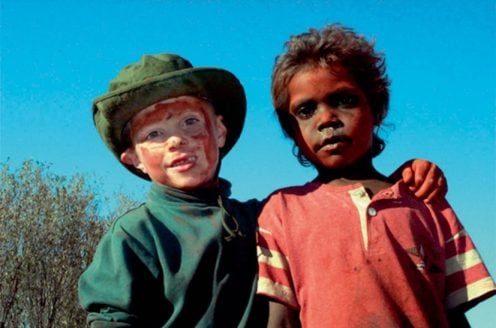
Figure 5. Joe and Australian friend, 2003.
We arrived in Alice Springs for the Australian winter of 2003 for our first adventure, with Aboriginal people in the Red Center. Our sons immediately went feral. By the third night in Oz, we checked into our million-star hotel, sleeping on the red dirt in swags well-designed to keep snakes and spiders out. We spent the first two magical weeks of our sabbatical with the Southern Cross overhead, the smell of campfire in our nostrils, and our heads filled with the walkabout stories and legends of the native people. My two littlest boys dug for honey ants and grubs and played with the local children, climbing in to join their family groups piled onto old mattresses spread out on the desert floor. We settled into an eight-week stay at Swinburne Tech, in Melbourne, and Joe and William went to kindergarten and first grade in the Hawthorne public school. I secured for James a two-month stay at a fine boys’ boarding school, Scotch College, nearby. Every weekend the family would go visit gold mines and farm stays.
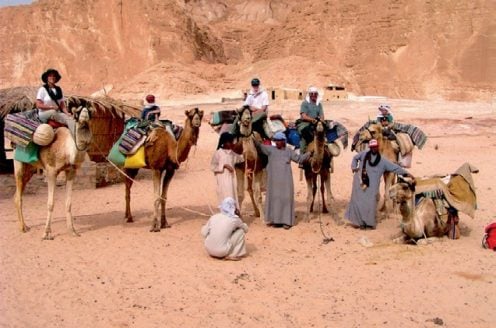
Figure 6. Family on a five-day camel trek across the Sinai Desert, 2004.
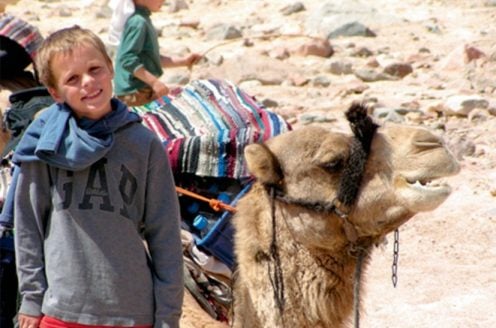
Figure 7. William and camel.
It was winter again when we came back to Caltech for a short stay, and then headed to Africa for the next stage of our voyage, which included Egypt, South Africa, Namibia, and Madagascar, followed by the United Kingdom. It was a fairy-tale sabbatical, and the best year of my life. We were all happy, healthy, and delighted to watch our sons soak up the adventures.
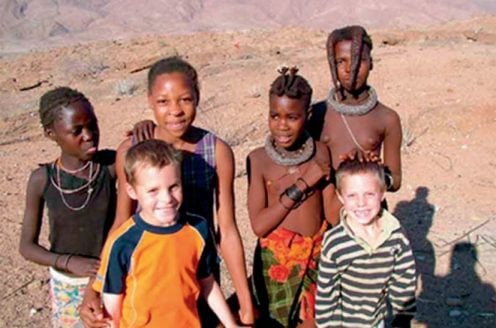
Figure 8. William and Joe with friends in Namibia, 2004.
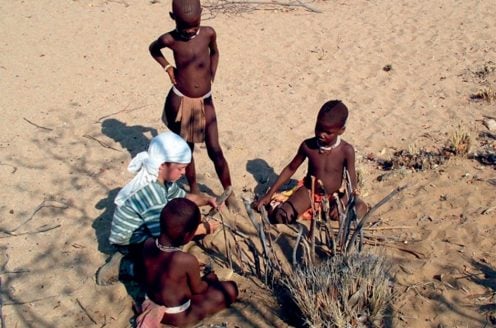
Figure 9. Joe with Himba friends in Namibia, 2004.
My research group did exceptionally well during this time. I realized they could do more on their own, and that they had developed real leadership skills. From then on, I have given group members as much freedom as I can to pursue their own ideas and mentor others.
2005–2010: Dark times
I returned from this magical year at the end of 2004 to find out that I had breast cancer which had spread to my lymph nodes. I underwent two surgeries and 1.5 years of debilitating chemotherapy and radiation. I took up yoga for physical and mental health, and somehow managed to work every day, from which I derived both pleasure and purpose.
Our science started to focus on a problem I had long been interested in, alternative energy. Oil prices were steadily climbing. Since 2000 we had been engineering cytochrome P450s to oxidize alkanes, one goal being to make recombinant organisms that could convert gaseous alkanes to liquid fuels. In 2005, with Matt Peters and Peter Meinhold, and funding from a prominent venture capitalist, we started what soon became Gevo, Inc., one of the first biofuels start-ups in the new ‘synthetic biology’ space. Undergoing intense treatment for breast cancer, however, I was in no condition to spend much time on that project, and Matt and Peter ran the circus. Gevo, still in business today, makes renewable jet fuel starting from biomass using an engineered yeast and chemistry.
On January 22, 2010 Andrew Lange committed suicide, which shocked the world and left behind grieving family members, friends, students, and colleagues. We had not lived together for more than two years, but I now had to pick up the pieces of our family and cut some sort of path for our three shattered sons, then ages 17, 13, and 11. That year was a blur. Members of my research group continued to take care of each other, and they and Caltech were my rock. My friends helped me throughout. I continuously remind myself that no one is guaranteed an easy life, but we can make it easier for others.
2011–Present: A new stage
In good health, and perhaps just a bit wiser than before, I made a conscious decision to take risks again, in my professional life as well as my personal one. I traveled with my sons, encouraged their own adventures that took them to distant lands, and made many new friends outside my usual circles. I continued favored activities like scuba diving, and hiking to my historic one-room cabin in the San Gabriel Mountains. And for the first time I accepted invitations to give scientific talks to general audiences. I discovered that both scientific and general audiences respond warmly to story-telling and efforts to convey the big picture; they want to be reminded of the wonder and power of evolution, which we see all around us, and to think that science can lead to a better future. I like to end my talks with an open and exciting future full of questions to answer, rather than closing the box on a problem.
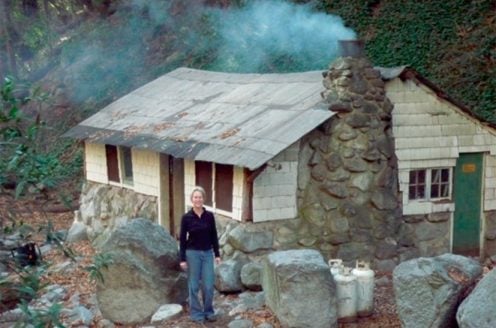
Figure 10. Frances at her cabin in the San Gabriel Mountains outside Los Angeles.
Perhaps most important, I felt free, even compelled, to pursue new and more challenging problems with my science. I had always wanted to make enzymes do new chemistry, and catalyze reactions not known in the biological world. I posed to several good chemists in my group the specific question: can you get a cytochrome P450 to catalyze reactions using nitrogen rather than oxygen? They rose to the challenge, and we engineered the first ‘nitrene transferase’ and ‘carbene transferase’ enzymes in 2012. Building on this realization that nature is poised for all sorts of new capabilities, we have been exploring a whole new world of enzyme chemistry.
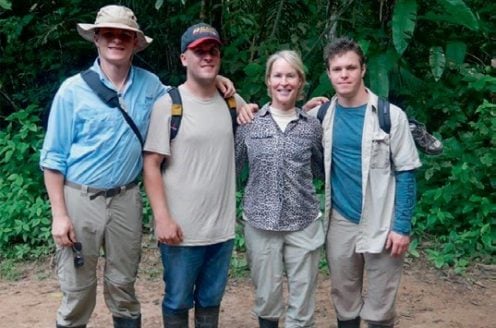
Figure 11. William, James, Frances, Joseph in the Peruvian Amazon, 2016.
Today my laboratory feels very much like it did in the exciting days of the 1990s: intense, with a palpable sense of discovery and the knowledge that we are laying the foundations of how molecules will be made in the future, using genetically-encoded biological systems that include enzymes engineered to do chemistry first invented by human beings. I am grateful to experience that excitement and focus for a second time, again shared with a tremendously talented group of young people.
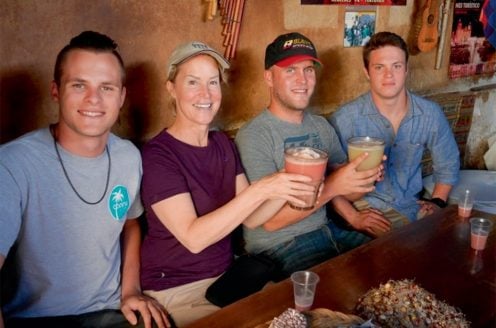
Figure 12. Enjoying chicha with William, James and Joseph, Peru, 2016.
My work with directed enzyme evolution was recognized by the Charles Stark Draper Prize in 2011, the highest honor an engineer can receive in the United States. I was the first and remain to this day the only woman to win this award, which has been given by the U.S. National Academy of Engineering since 1989. My two youngest sons and I were welcomed by President Barack Obama at the White House in 2013, when I received the U.S. National Medal of Technology and Innovation. (James was serving in the U.S. Army in Afghanistan and could not join us.) And in 2016 I received the Millennium Technology Prize, again the first (and only) woman to be so honored. I did not set out to be the first female engineer to break into this rarefied territory, but I was one of the first to be given the chance to show what she could do. Only the ninth woman to be hired on the Caltech faculty, I am the first female Nobel Laureate there. Many brilliant women have joined science and engineering faculties in my lifetime, and I predict that many more of the highest recognitions of women’s scientific contributions are coming.
Concluding remarks
I am sure the reader will note that I have not commented directly on the contributions of the many students, postdocs, and colleagues I have worked with and drawn inspiration from. Some were called out specifically in my Nobel Lecture, but I have not been able to thank everyone who contributed to the conception and wide application of directed enzyme evolution. I would like now to thank my mentors and those I have tried to mentor, for I learned much from you. I also want to thank Ben and Donna Rosen for all that they have done and continue to do for Caltech; it has been my great honor to direct the Donna and Benjamin M. Rosen Bioengineering Center for the last six years.
My father, William Howard Arnold, died in 2015. I miss him very much. He would have been very proud and would have especially loved the Stockholm festivities. My dear middle son, William Andrew Lange, died in 2016 at the age of 20; his short life was enriched by caring for monkeys in South Africa, for children in Kenya and India, and for his friends. Both Williams are still very much in my heart. I’d like to think that Andrew, too, would have been happy for me. My son Joseph, and my son James and his wife Alanna, and my stepson Sean Bailey came to Stockholm together with nearly sixty friends, family members, and former students to celebrate my Prize. I am very grateful for all that I have and for all the people, and animals, who have enriched my life.
This autobiography/biography was written at the time of the award and later published in the book series Les Prix Nobel/ Nobel Lectures/The Nobel Prizes. The information is sometimes updated with an addendum submitted by the Laureate.
Nobel Prizes and laureates
Six prizes were awarded for achievements that have conferred the greatest benefit to humankind. The 12 laureates' work and discoveries range from proteins' structures and machine learning to fighting for a world free of nuclear weapons.
See them all presented here.
